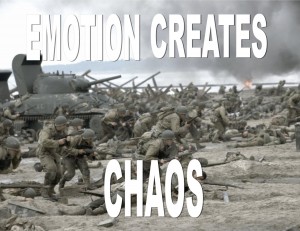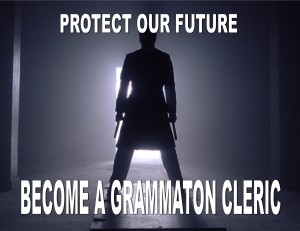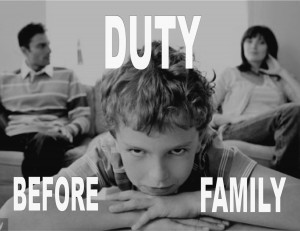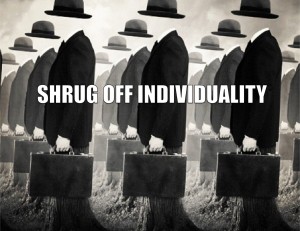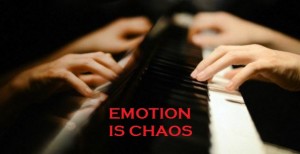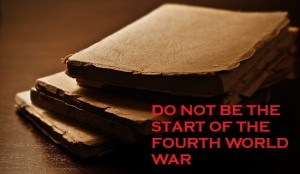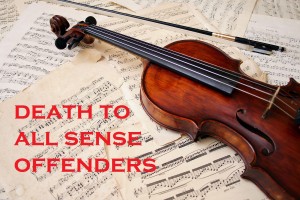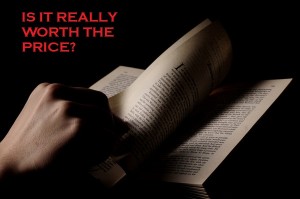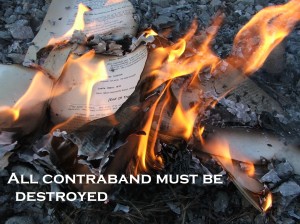Being a double major in historic preservation, I like to examine how people use the built environment. Since both the ITCC and the History of the Information Age are new, I wanted to reflect on how our class functioned in our classroom space. I don’t think the format of our class was best suited for the space and vice versa. The classroom was too large for a discussion-based seminar. The spread apart tables frequently made people look inward instead of facing outward into the conversation. I think the discussions would have flowed better if we sat around a large table or pulled our chairs into a circle. However, the space was well-suited for our warm-up activities. The large center space was perfect for playing trainwreck and using the white boards. Similarly, the computers at each table were wonderful for activities requiring us to explore our own technology and information usage. If the History of the Information Age is taught in ITCC 327 again, perhaps the focus should be on group work more than discussion. If so, maybe some of the readings and parts of the syllabus need to be reworked so the groups can digitally explore topics such as early communication during class. Otherwise, maybe the class should consider having one seating arrangement for group work and another for discussions.
Category Archives: infoage2014
The Digital Divide in the United States
I chose to create an infographic representing the geographic digital divide in the United States. When I conducted my preliminary research on the digital divide in the United States, I was struck by how few scholars focused on geography and population density. Understandably, they primarily studied contributing factors such as race/ethnicity, gender, age, income, and education levels. I decided to create an interactive map showing the percentages of households with Internet access per state, although a county-by-county map would have been more accurate. I used a gradient to highlight the geographic trends among the states. States with the smallest percentages of households with internet access are the lightest colors, while those with high percentages are the darkest. Each color represents a 5% increase in households with access. The viewer can see the exact percentage by hovering their cursor over each state.
The maps show that rural households generally have less internet access than urban households. Still, only 50%-75% of urban households have internet access. However, people living in urban areas also have greater access to internet outside of their homes. Primary factors impacting rural internet access include infrastructure and income, while income, race/ethnicity, and education level have a larger impact on urban internet access. The digital divide in America has huge implications. The digital divide makes it difficult for people without internet to access information quickly. The digital divide also impacts these people’s visual and digital literacy, affecting everything from their ability to deconstruct images in a political campaign to their ability to find a job in the 21st century–ultimately helping to reinforce income inequality.
I used Piktochart and a 2007 survey by the National Telecommunications and Information Administration.
Sources:
National Telecommunications and Information Administration. “State by State Internet Usage.” 2007. http://www.internetworldstats.com/am/USA_Internet_Usage_2007.pdf (accessed December 1, 2014).
Real, Brian, John Carlo Bertot, and Paul T. Jaeger. “Rural Public Libraries and Digital Inclusion: Issues and Challenges.” Information Technology & Libraries 33, no. 1 (March 2014): 6-24. OmniFile Full Text Mega (H.W. Wilson), EBSCOhost (accessed December 2, 2014).
Warf, Barney. “Contemporary Digital Divides in the United States.” Tijdschrift Voor Economische En Sociale Geografie (Journal Of Economic & Social Geography) 104, no. 1 (February 2013): 1-17. Academic Search Complete, EBSCOhost (accessed December 2, 2014).
Infographics and Visual Literacy
I think our infographics class activity on Tuesday was actually a pretty good representation of the assumptions people make about their audience’s visual literacy and cultural knowledge when they create infographics. For example, Table 3’s infographic expects viewers to understand that they are looking at a timeline, even though it isn’t formatted as a traditional timeline. The infographic also assumes that the audience recognizes Pusheen. Similarly, Table 4’s infographic takes for granted that the user knows to hover over each state to see the number of Olympic medal recipients. It also expects viewers to figure out that it only represents the contiguous states. While these all sound like simple examples, they reveal that the makers of infographics expect at least a basic level of visual literacy. A third grade viewer may have recognized Pusheen, but also not realize that two states are missing from the map of the U.S. I think these infographics highlight the need for designers to consider their audiences, as well as the need for visual literacy education.
Privacy in the Digital Age
The article “The Web Means the End of Forgetting” by Jeffrey Rosen disturbs me. I’m not that bothered by the lack of privacy on social media accounts -don’t share things if you mind the public knowing about it. What really concerns me is the potential for people’s private reputations to be ranked and made available on the internet. Maybe I’m old-school, but I think that you should primarily judge a person’s private reputation by getting to know them. I’m afraid of how subjective these ranking systems would be. So often we misjudge each other first based on a friend’s comments instead of our own interactions. I think taking what is a normal social defense mechanism and applying it broadly to people through the internet could be detrimental to our formation of relationships. I honestly don’t want my social desirability ranked. I’m an intense, introverted person, so I would probably receive poor ratings because it takes a while for people to get to know me -something that my social media profiles do not reflect.
Art in the Digital Age
Last week Carla posed several interesting discussion questions about what will happen to art in the Digital Age. She wondered if the quality of art would decrease because people have broader access to programs to create and spread their work. Ultimately, I don’t think the quality of high art will decrease. Throughout the Information Age, people have spent the time and money to develop the skill necessary to become an artist. Frequently this involves studying with masters in the field. I highly doubt this will change during the Digital Age since it is almost impossible to learn how to do art well without the help of a master who must be paid for their time and expertise, even if they teach long distance lessons over Skype.
However, I do believe that the Digital Age has made the creation of art more accessible to the general population. The people who don’t have the time or money to extensively study an art form now have ways to creatively express themselves, inundating the internet with art. Despite the increasing amounts of art, I don’t think our society will be overrun with poor art. Our society has aesthetic standards that help us judge the masterwork from the work of a talented amateur from a hack.
Propaganda Campaign
Group six decided make a propaganda campaign for the movie Equilibrium, a dystopian science fiction film. The movie is set in a futuristic society (it takes place in 2072) named Libria, where citizens take a drug called Prozium to suppress their emotions and foster obedience to the totalitarian regime. The regime incinerates contraband items that have the potential to stimulate emotion such as music, art, and literature. Citizens who possess contraband and do not take Prozium are known as Sense Offenders. The law enforcement, called the Grammaton Clerics, destroy contraband and execute Sense Offenders.
Our group chose to create visual forms of propaganda to reflect the complexity of Librian governmental control. Visual propaganda is almost inherently a form of art because it has an aesthetic specific to its creators. Since art is banned in Libria, we faced the challenge of deciding what images were acceptable to be displayed. This ambiguity was compounded by the fact that Libria is set in a digital age where photography could easily be considered a form of art. Because images are so integral to visual propaganda, we decided to primarily use photographs to convey the messages. We chose dark images that fit the artistic style of the movie. These images fit the perspective of the regime: they portray the arts and individuality as dangerous and destructive. The darkness of the images suggests that the denial of emotion coupled with duty and obedience to the regime are the only ways that humans can continue to survive in a world that would otherwise be ripped apart by emotion. Our posters seek to accomplish the goals of the regime by influencing citizen’s perceptions and controlling their behaviors. They use scare tactics to deter citizens from using contraband while flag-waving encourages them to take Prozium and report Sense Offenders.
Likewise, the propaganda video relies on disturbing historical images and darkness to visually convey the dangers of human emotion. We chose to make the film silent since the regime banned music. We also decided against having sound effects or a voiceover, instead allowing the full weight of the words and images to sink into the viewer. The pressure created by darkness and solemnity of the white words on the black background resolves with the appearance of the national flag at the end of the video. The patriotic flag conveys the authority of the government with the assurance that those who submit to the regime and its use of Prozium will survive. The ad nauseum repetition of the video and the posters seeks to make the citizens accept the fact that emotions and emotional stimuli will destroy their society.
We used quotes and screencaps from the movie to make our video.
Movie Citation:
Equilibrium. DVD. Directed by Kurt Wimmer. 2002; New York City, NY :Dimension Films, 2003.
Image Sources:
“Book Burning.” Wikipedia. http://en.wikipedia.org/wiki/Book_burning (accessed October 29, 2014).
C., Radford. “Christian Bale in Equilibrium (Video).” Lazy Tech Guys. http://lazytechguys.com/news/christian-bale-in-equilibrium-video (accessed October 29, 2014).
Cello and Strings. http://www.celloandstrings.com/ (accessed October 29, 2014).
Emrick, LeeAnne. “Old Poetry Books.” Redbubble. http://www.redbubble.com/people/lmemrick/works/3545140-old-poetry-books (accessed October 29, 2014).
Enck, Denise. “Self-publishing Your Poetry Book or Broadside.” Empty Mirror. http://www.emptymirrorbooks.com/publishing/self-publishing.html (accessed October 29, 2014).
Jain, Anurag. “Life of Conformity in a Free Society.” Neev Forum For Integral Living. http://neevintegralliving.com/archives/756 (accessed October 29, 2014).
“Saving Private Ryan.” Fanpop. http://www.fanpop.com/clubs/saving-private-ryan/images/1669340/title/storming-beach-wallpaper (accessed October 29, 2014).
“Separating parents forced to attend custody classes so they realize damage to children.” Daily Mail, September 25, 2010. http://www.dailymail.co.uk/news/article-1315115/Separating-parents-forced-attend-custody-classes-realise-damage-children.html (accessed October 29, 2014).
“Violin, musical instrument, bow, sheet wallpaper.” ForWallpaper.com. http://www.forwallpaper.com/wallpaper/violin-musical-instrument-bow-music-sheet-130273.html (accessed October 29, 2014).
Woollaston, Victoria. “Forget brain training: Playing a musical instrument can sharpen your thoughts – and help ward off depression and dementia.” Daily Mail, September 27, 2013. http://www.dailymail.co.uk/health/article-2435013/Forget-brain-training-Playing-musical-instrument-sharpen-thoughts–help-ward-depression-dementia.html (accessed October 29, 2014).
Coding Web 1.0 versus 2.0
I decided to interview my mom about what she thought of coding webpages for Web 1.0 versus Web 2.0. She was an IT specialist for the government. She said, ” the old fashioned coder had to interview the customer to find out what the requirements were and then use creativity to design the page in their mind or on paper. The coder had to use their technical skills and understanding of html to produce the website. Coding forced you to use your memory, have a tremendous focus on detail to make sure all your tags were there, and an enormous amount of cross-checking to make sure that everything worked. It was costly, time consuming, and laborious, but I really enjoyed the thrill of success when I could find, diagnose, and correct problems. Overall, it was a tremendously creative process. I’m sure having software that does it for you is cheaper, quicker, and obviously more productive. It also probably has better and more interactive features than what I worked on. There are good things, but I can’t help but wonder if present creators of webpages haven’t lost the thrill of succeeding from building from a totally blank, text document to a dynamic webpage. That thrill is the thrill that programmers have, not application users.”
I found my mom’s thoughts an interesting reflection of the Web accessibility that we discussed in class. Her comments reflect the exclusivity of Web 1.0, but they also touch on the more widespread accessibility of Web 2.0. I especially find her comments on the creativity and skill of coders thought provoking because they parallel so many other trends created by improved technology such as people losing their ability to read maps because of GPS devices. Nowadays, people like me can create webpages without knowing how to code. However, as an application user, I can’t even comprehend the technical skill required to visualize the design for a webpage inside of my head. I just don’t have that level of mastery.
Live Tweeting Entries from Lucy Rebecca Buck’s Civil War Diary
I chose to live tweet entries from Shadows on My Heart: The Civil War Diary of Lucy Rebecca Buck of Virginia for this assignment. Lucy was 19 at the time she wrote the entries that I covered. She was a member of the small planter class in Front Royal, Virginia where she lived at her family’s plantation, Bel Air. Since Lucy’s entries in her diary from exactly 150 to 153 years ago were too sparse for me to effectively cover given the time constraints, I decided to live tweet her entries from January 27 to February 5, 1862. This section of her diary provided me with close to a daily supply of entries.
I started with Lucy’s entry from January 27 because it provides a fascinating window into Lucy’s ambivalence towards gender standards. In this entry, Lucy was caught up in the tensions created by social understandings of gender. Her two male guests hotly debated female education, which Lucy was a proponent of. As a hostess, Lucy chose to follow social conventions by changing the subject instead of defending female education and gaining a reputation as a free-thinking, unfeminine, young woman. The next two entries demonstrated the profound impact of a lack of accessible communication technology on Lucy. Both entries were filled with an undertone of anxiety because she had not heard from her brothers in the Confederate army. Writing letters was the only available form of communication between Lucy and her brothers. I especially enjoyed the juxtaposition of this protracted apprehension over a lack of communication with the instantaneousness of Twitter as a modern communication technology. The next several entries revealed Lucy’s emotional ambivalence characteristic of those who remained on the home front during the war: she was overjoyed at having her brothers home while simultaneously feeling melancholy about them having to leave again. The final entry returns to Lucy’s feelings of anxiety for her brothers since she has no quick way of communicating with them to find out where they are or what they are doing –a feeling almost foreign to us today with Twitter, Facebook, Tumblr, Pinterest, Instagram, text messaging, etc.
I tried to capture the overall topics and emotions of Lucy’s diary entries. However, I chose to write the tweets using informal, contemporary language including hashtags. I also modernized Lucy’s spelling and tweeted using my account instead of creating one for Lucy. I included the dates of Lucy’s entries in my tweets to provide additional structure and clarification against the dates of my tweets on Twitter. I did these things as a creative exercise in an attempt to imagine myself as Lucy, tweeting about her American Civil War experiences in 2014.
Sources:
Buck, Lucy Rebecca. Shadows on My Heart: The Civil War Diary of Lucy Rebecca Buck of Virginia. Southern Voices from the Past. Athens, GA: University of Georgia Press, 1997.
“Lucy and Nellie Buck.” Photograph. Front Royal, Virginia: Warren Heritage Society, c 1860. From Head Quarters 13th Regt. Rifles, Mass. Vol. , To Front Royal and Back. http://www.13thmass.org/1862/front_royal.html (accessed October 15, 2014).
Other sources that have influenced my thinking about Lucy:
Clinton, Catherine. Tara Revisited: Women, War & the Plantation Legend. 1st ed. New York: Abbeville Press, 1995.
Edwards, Laura F. Scarlett Doesn’t Live Here Anymore: Southern Women in the Civil War Era. Urbana and Chicago: University of Illinois Press, 2000.
Faust, Drew Gilpin, and NetLibrary, Inc. Mothers of Invention Women of the Slaveholding South in the American Civil War. Fred W. Morrison Series in Southern Studies. Chapel Hill: University of North Carolina Press, 1996.
Fox-Genovese, Elizabeth. Within the Plantation Household. Chapel Hill and London: University of North Carolina Press, 1988.
Groh, Mary Lou. “Maria “Belle” Boyd.” The Civil War Trust. http://www.civilwar.org/education/history/biographies/maria-belle-boyd.html (accessed April 16, 2014).
Ott, Victoria E. Confederate Daughters: Coming of Age During the Civil War. Carbondale: Southern Illinois University Press, 2008.
Rable, George C. Civil Wars: Women and the Crisis of Southern Nationalism. Urbana and Chicago: University of Illinois Press, 1989.
Roberts, Giselle. The Confederate Belle. Columbia: University of Missouri Press, 2003.
Living Under a Rock: Film
Time for some more infoage14 therapy. I cringe at saying this, but I REALLY don’t like movies. I especially HATE going to movie theaters. I actually do not like the immersive experience of going to the movies. It might sound funny, but movies are too intense for me, even in home theaters. The sounds and the images just create too much emotion for me to enjoy watching movies. Add vibrations, a large screen, and a crowd of people silently watching in the dark, and going to the movie theater becomes a stressful experience for me. So I just don’t go to the movies. On occasion, my boyfriend can persuade me to watch a movie on Netflix. So what does this mean besides me being side-lined for class discussions about the cultural and social experiences of going to the movies?
I have incredibly large gaps in my cultural knowledge. I’d never seen any of the movies my group was given to act out in charades during class. But I’m not completely alone. Perhaps I’m the only one in class, but there is a significant minority of people in the United States who have gaps in their cultural knowledge because they don’t see movies for religious, cultural, economic, or personal reasons. I found it interesting how assumptions about common experiences dominated class discussion when the definition of such a mainstream experience as watching movies could be challenged demographically. Maybe the mostly white, female, middle-class infoage14 class shares common experiences and cultural knowledge, but are these experiences shared across the United States? -They certainly weren’t at my demographically diverse high school.
So what have I gained from not watching movies? I guess you could say a different perspective on both the films and the cultural experiences of watching them.
Attack of the City Snatchers: Table Six’s Apocalyptic Radio Broadcast
Table six decided to create a satire of apocalyptic culture for our radio broadcast project. Orson Welles’s “War of the Worlds” inspired us to explore fictional radio broadcasts in American history. We borrowed some of the character-defining strategies used in “War of the Worlds” such as the incorporation of music and sound effects in the creation of our broadcast. Similarly, our broadcast also used call-ins for a feel of authenticity. However, that is where the similarities between our broadcast and “War of the Worlds” ends. Because apocalyptic culture so often focuses on aliens or zombies, we instead chose to have American cities simply disappear in our catastrophic event. We also peppered the dialogues between the two radio hosts with references to contemporary social and cultural tensions to undermine the urgency of the broadcast. Furthermore, the unbelievable call-ins parodied conspiracy theories and paranoia. We chose the twist in the ending to reflect the ways in which apocalyptic culture has conditioned us to jump to wild conclusions, especially when the information is presented in an official manner.
We used Audacity to create this recording. Gwen and Jess played the radio hosts Karen and Jay, while Mary voiced the call-ins.
Bibliography
Audio Productions. “White Noise Sound Effect.” YouTube. https://www.youtube.com/watch?v=Y3FtM9M94SI (accessed September 26, 2014).
Blue Swede. “Hooked on a Feeling.” YouTube. 1974. https://www.youtube.com/watch?v=m86nMHfvl7s (accessed September 26, 2014).
Cavendish, Richard. “Oct 30, 1938: Martians Invade New Jersey.” History Today, 58 (October 2008): 13. http://web.a.ebscohost.com.ezproxy.umw.edu/ehost/detail/detail?vid=14&sid=558735b3-c34a-4bd7-874e-25fde5ea4c38%40sessionmgr4005&hid=4214&bdata=JnNpdGU9ZWhvc3QtbGl2ZQ%3d%3d#db=ofm&AN=504198075 (accessed September 29, 2014).
Chiaroscuro, Aural. “The Emergency Radio Broadcast in Orson Welles’s ‘The War of the Worlds.’” English Language Notes, 46 (2008): 193-197. http://web.a.ebscohost.com.ezproxy.umw.edu/ehost/detail/detail?vid=4&sid=558735b3-c34a-4bd7-874e-25fde5ea4c38%40sessionmgr4005&hid=4214&bdata=JnNpdGU9ZWhvc3QtbGl2ZQ%3d%3d#db=a9h&AN=34045597 (accessed September 29, 2014).
Hayes, Joy Elizabeth and Kathleen Battles. “Exchange and Interconnection in US Network Radio: A Reinterpretation of the 1938 War of the Worlds Broadcast.” Radio Journal: International Studies in Broadcast and Audio Media, 9 (2011): 51-62. http://web.a.ebscohost.com.ezproxy.umw.edu/ehost/detail/detail?vid=1&sid=558735b3-c34a-4bd7-874e-25fde5ea4c38%40sessionmgr4005&hid=4214&bdata=JnNpdGU9ZWhvc3QtbGl2ZQ%3d%3d#db=ofm&AN=82571430 (accessed September 29, 2014).
“O Canada.”YouTube. https://www.youtube.com/watch?v=zwDvF0NtgdU (accessed September 26, 2014).
“The Purge Emergency Broadcasting System.” YouTube. https://www.youtube.com/watch?v=R7GMcgL2nro (accessed September 26, 2014).
R.E.M. “It’s the End of the World As We Know It (and I Feel Fine).” YouTube. 1987. https://www.youtube.com/watch?v=oIdPPVkkHYs (accessed September 26, 2014).
